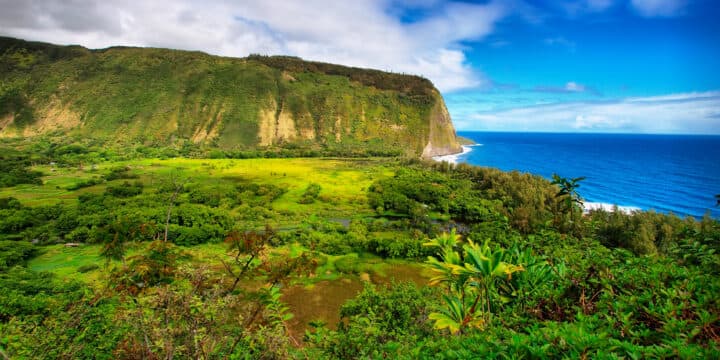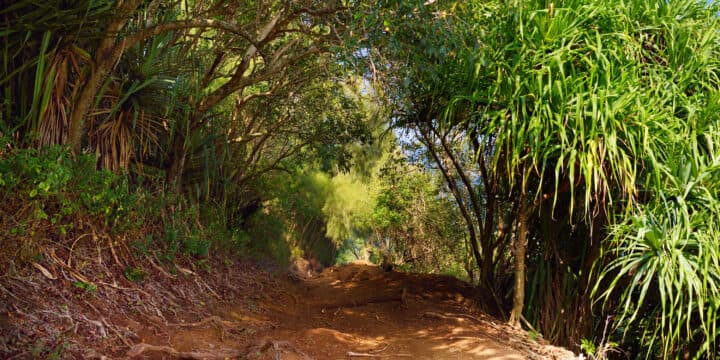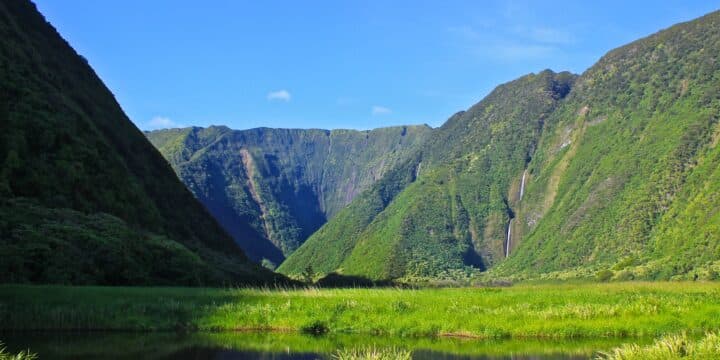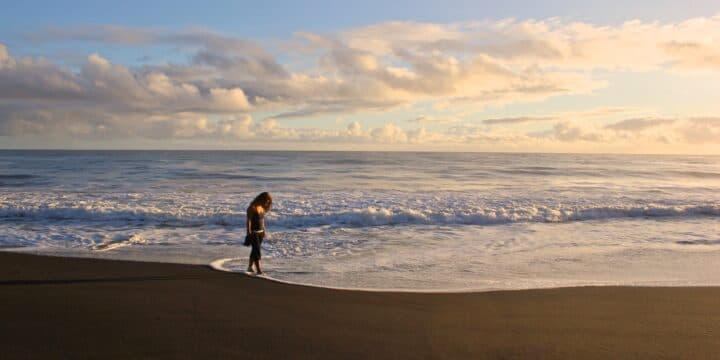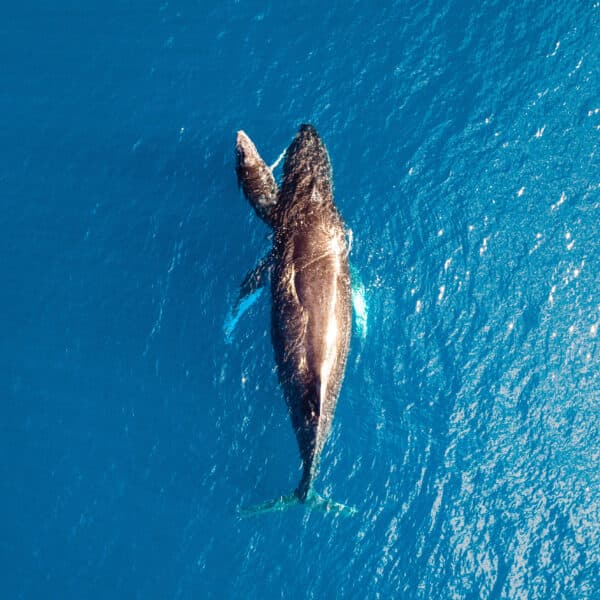
Verdant Valleys
Carved in culture and history
BY Andrew Walsh
Five hundred thousand years ago, a tiny plume of lava rock broke through the ocean’s turbulent surface, deep under the now extinct volcano of present-day Kohala. As the waves pounded against this growing mass of living rock flowing skywards, slowly the 75-million-year-old process that formed all of the Hawaiian-Emperor Chain, fueled by a “hot spot” of seeping magma from the asthenosphere deep under the Pacific Plate, began inch-by-inch to shape the Island of Hawai‘i, aka the Big Island. And although Kohala hasn’t flowed for over 120,000 years, this monumental clash between water and fire can still be seen, felt, and immersed within the legacy of breathtaking valleys left behind on its eastern flank.
Waipio
Viewed from the south, Kohala’s distinctive top is covered in a very rare cloud forest (rainforest from cloud precipitation) with a distinctive tree line marking the many private ranches and farms that reside on its leeward flanks. A large majority of the island’s endemic (found nowhere else) species of native flowering plants reside in Kohala’s embrace. The forests give way to the immense green valleys and steep cliffs of the windward (weather facing) coast. A massive landslide created these deep gorges and stark cliff-sides 250,000 years ago. Kohala’s mass extended much farther into the Pacific and was 1000-m higher before this massive geological event ejected the eastern side of the volcano up to 80 miles out to sea! The further erosion from the waves and weather on the windward side helped to sculpt the truly awe-inspiring valleys we see today, such as Pololū from the north, Waipi‘o from the south, and the most difficult to access Waimanu, in between.
To get into Waipi‘o, you will need a four-wheel drive vehicle to traverse its treacherous access road. If you are keen for some serious exercise you can hike down, and back up, the road as well. The mouth of the valley opens to an incredible black sand beach flanked by pillars of lush green cliffs on either side. Be very careful about swimming here, as the currents are strong. Even though you will most likely see surfers out in the windward waves, keep in mind they are seasoned watermen. You aren’t allowed to camp in Waipi‘o, as it is owned by Bishop Estates (a private Hawaiian organization) who leases the land to native Hawaiians for agriculture.
Head back into the valley by truck or on foot and forge across the many streams and tributaries as you keep an eye out for wild horses, huge waterfalls, and local farms/residences. Be extra respectful of the small community of homeowners, many of whom grow kalo (taro), carrying on a tradition of farming that began with the ancient Hawaiians. The six-mile-deep valley once grew every foodstuff known to the original inhabitants and in times of famine could probably have supported the entire population of the island.
It was also here, in the time of Alapa‘inui, ruling king of the island of Hawai‘i, a royal infant named Pai‘ea was born under a fiery comet sent by the gods that foretold the coming of the “killer of all kings.” The year was 1758. Wary of the legend, Alapa‘inui took heed of the December comet, later known as Halley’s, and ordered Pai‘ea killed. But his mother Keku‘iapoiwa hid her son deep in the safety of Waipi‘o Valley. Pai‘ea was forgotten by the ali‘i (royalty) for many years. However, he would later return as King Kamehameha and become the greatest ruler Hawai‘i had ever known. His boyhood home truly seems fit for a king. And just as the paths of the many waterfalls cascading down the valley is etched in rock and earth, a trip to Waipi‘o will leave an interminable impression upon your memories for years to come.
Pololu Valley
Pololū Valley in the north is the first of the many lush tropical valleys that define Kohala’s Hāmākua Coast. Getting there is easy—just drive north on the only road that heads to the very top of the island, passing through stunning scenery and inviting local towns, such as Hāwī and Kapa‘au. When the road ends, you’re there. Although not accessible by car, a moderate hike down gives you access to a stunning beach and breathtaking views. Characterized by lush carpets of tropical greenery filling every nook along the valley walls, the 400-ft. hike down numerous switchbacks treats you to many picturesque lookouts and a wide variety of native vegetation, such as air plant, ironwood, and morning glory, many of which the traditional Hawaiians used for daily purposes.
At the end of the trail on the valley floor is a reward few other hikes will offer—a picturesque black sand beach reminiscent of the Hawai‘i found in travelogues and postcards. But don’t be lulled by the ocean waves here, as the wind and waters off Pololū are very dangerous. Pololū Beach was known as a Waohala, the name given to a place where a chanter could test his voice against the wind and waves. No need to test yours as there are no lifeguards in this remote oasis.
Looking back into the isolated valley with the sound of the ocean behind you, a peaceful stream runs through Pololū and meets up with the ocean at the beach. Although, it may be hard to imagine the sweeping valley once cultivated a large community of kalo farmers who moved their harvest out by donkey trains. Many of the hikes at the top (or back) of the valley, which locals and guiding organizations offer, visit the remnants of these historic times.
If you cross the black sand beach, it is also possible to hike up the southern flank of the valley onto a grass-laden plateau trail that leads to the next valley, Honokāne Nui. Along the path you will be stunned by the scenic views of the coastline, bamboo forests, and the elusive Jamaican liliko‘i (passion fruit) that grow on vines covering the coastal tree tops. Just keep in mind the trail gets more difficult and isolated the farther you head south. Camping in Pololū Valley is not permitted. Without a doubt Pololū, like Waipi‘o, is a sacred place that can be explored time and again for its history, culture, connection to the land, and unforgettable tropical atmosphere.
Waimanu Valley
For those looking for a more hard-earned adventure, Waimanu Valley offers an unforgettable immersion into the backwoods of Hawai‘i. Just north of Waipi‘o Valley, the trail to access Waimanu begins on the northern tip of Waipi‘o’s beautiful sandy beach at the Muliwai trailhead. Also known as the Z-Trail, the distinctive switchbacks are a harbinger of what’s to come—16 miles (round-trip) and a mile of vertical elevation (up and then down) along a wet, rocky, sometimes mosquito-laden minefield, with occasional rock falls and vertical drops of 500-feet, just inches off the trail. Oh, and you’ll need to cross about 12 streams, some with high flash flood danger that can sweep you away or strand you on the wrong side, and Waimanu River, the last obstacle as you reach the valley.
So if you are still thinking of hiking the valley, I hope the idea of preparation and doing plenty of research are your very next thoughts. Consider any stream you cross at calf depth can easily become shoulder depth if it rains overnight. And if you start from the Waipi‘o Lookout, it’s actually 19 miles round-trip and another thousand or so feet of added elevation drop to the trailhead. That being said, it is possible to do this hike in a day (about 7 hours each way weather permitting), but you must leave early, have good conditions, and be well stocked for any unplanned excitement. Also, you need to be in seriously good shape. Many people do multi-day camps into the valley, which allows for more food and resource should anything go wrong, and less strenuous single day hiking. Once in the valley, you will be treated to private waterfall-fed swimming holes, breathtaking scenery, and hidden snorkeling spots in the many pools and streams as you hunt for prawns. Best of all, you will experience the seclusion and serenity of one of the most isolated tropical valleys, on one of the most isolated land masses in all the world, all to yourself. Camping permits are required— and we recommend letting a friend know where you are going and when you plan to return.
Whatever valley you choose, Hawai‘i’s coastline has a story and ancient wisdom rooted in time, nature, and the early Hawaiians who came before us. I hope you discover some piece or chapter in this saga and perhaps, just maybe, add a little bit to it yourself. Happy trails!
For permit and trail information, make sure to visit muliwaitrail.com/permits.
